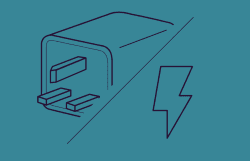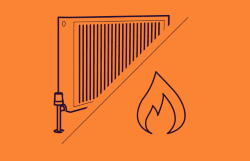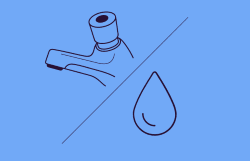In recent weeks, tensions between Russia and Ukraine have been on the rise. Analysts and state leaders in Europe worry that an invasion is imminent. If Russia actually entered Ukraine’s territory, the consequences would be numerous. Not only the sovereignty of other European states could be at risk, but the flow of commodities such as gas could be disrupted.
Warren Patterson, head of commodities strategy at ING said that ‘the US and European Union may also react in the event of a conflict, leading to sanctions against Russia that could have an impact on the supply of a number of commodities to world markets.’
He also explained that ‘Ukraine is an important transit route for Russian flows to Europe” and Russia is a key supplier of natural gas to the EU, meeting almost 50% of the region’s import demand.’
Hence, if the situation intensifies, gas supply in Europe will undoubtedly be affected.
Why are Russia-Ukraine tensions increasing?
As CNN reported, ‘Tensions between Ukraine and Russia are at their highest in years, with a Russian troop build-up near the two nations’ borders spurring fears that Moscow could launch an invasion in the coming weeks or months.’
But how did the situation get so serious?
The conflict between Russia and Ukraine has been long-running. Ever since Russia invaded and subsequently annexed the Crimean Peninsula in 2014, relations between the two countries have not been amicable. Russia has repeatedly tried to get more control over Ukraine. Up until recent weeks ago, however, Russia was mainly focusing on exercising political and military pressure. It would conduct various military drills in Ukraine but, for the most part, it has not directly been aggressive.
Now, Russia has been increasing its military presence in Ukraine and deploying more and more troops, especially in the West of the country. CNN reported that ‘in late 2021, satellite photos revealed Russian hardware — including self-propelled guns, battle tanks and infantry fighting vehicles — on the move at a training ground roughly 186 miles (300 km) from the border.’ The news agency added that ‘the United States and NATO have described the movements and concentrations of troops in and around Ukraine as ‘unusual.’
According to Vox, ‘US intelligence officials warned that Russia was planning a major military offensive into Ukraine, launching as many as 175,000 troops into the country as soon as early next year.’
Western powers have repeatedly warned Russia about the consequences should it invade Ukraine but Russia denies planning an attack so, for the time being, there is not much the European Union or NATO can do.
How is gas relevant?
Europe needs Russian gas flowing through Ukraine, especially as most European countries are currently dealing with gas shortages and are relying on gas reserves. Once Nord Stream 2 is completed, Russian gas would be flowing via an alternative route but the project has not yet been approved by Germany.
As Russia knows Europe is dependent on it for gas, it uses it to exercise pressure on policymakers and state leaders. Putin knows that if European states are worried about not having any gas, they will do what he wants them to do.
So what does Putin want? His main demand is that NATO stops expanding and that the organisation promises that Ukraine will never be accepted into its ranks. After all, the expansion and growth of NATO threatens the Russian president’s plans to rebuild the Russian empire.
What does potential conflict mean for gas supply?
Every year, Ukraine receives billions in transit fees. If a conflict breaks out and Russia stops moving its gas through Ukraine, the Eastern European country will suffer economically.
But Ukraine will not be the only affected country.
Drops in Russian gas exports to Europe are one of the most important factors causing European gas prices to reach record highs.
When Germany delayed the approval of Nord Stream 2, gas prices around Europe increased. Any threat to the existing gas line passing through Ukraine, would result in the same. That means that if the invasion occurs, everyone in Europe will find themselves paying more for their gas supply.
‘Russian gas flows are the largest single source of price risk for European energy, and the future of those flows are closely tied to rising tension between Russia and Ukraine,’ wrote MarketWatch.
The invasion would mean not only higher gas prices, however. Many countries would struggle even more to meet the demand for gas, especially as winter in Europe is far from over. Armed conflict would also mean putting the European green agenda and other sustainability projects on hold. Traders are right to be nervous about the future of Russia to Europe gas flows and the next few months will show how the situation evolves.




